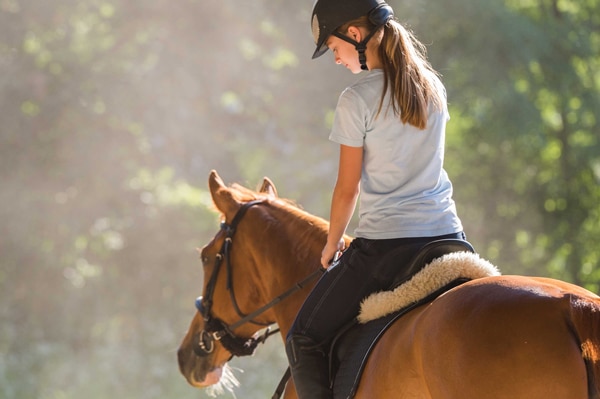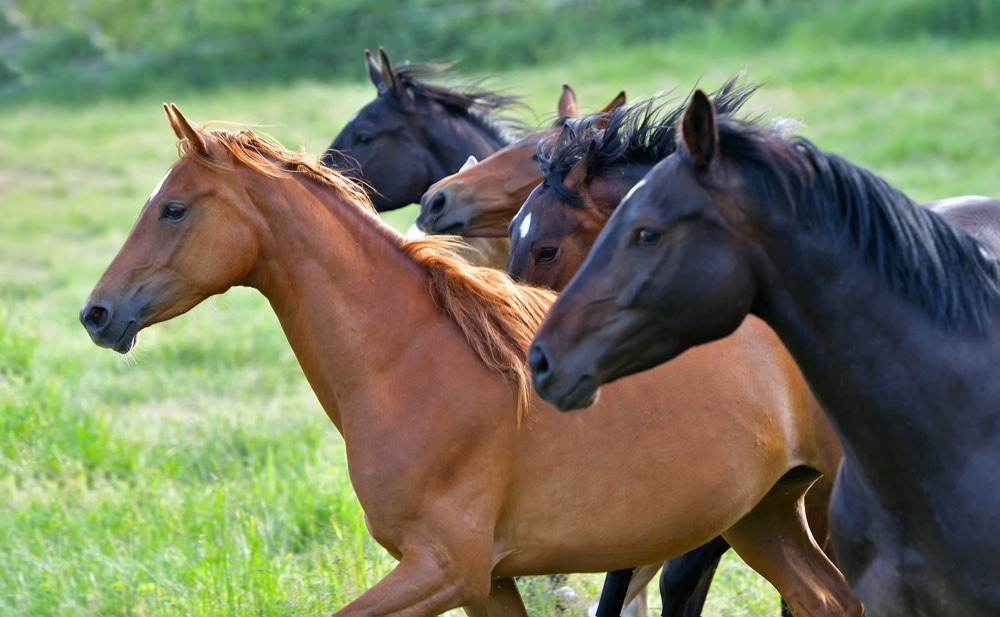Horses can be affected by different viruses each with their own characteristics. Among viral diseases, equine influenza is a common risk with new strains regularly emerging. It is important to understand how to prevent both infection and spread. Let’s take a closer look at equine influenza.
Basic Facts on Equine Influenza Virus
Equine influenza virus (EIV)—or equine flu—is one of the most common and contagious infectious upper respiratory diseases in horses. It can spread rapidly in unprotected horses, with symptoms appearing within one to four days following exposure.
Common signs of equine flu are:
- Moderate to high fever (39.2 °C to 41.4 °C)
- A clear to thick yellowish nasal discharge
- A frequent dry cough
- Lethargy
- Anorexia
Secondary bacterial pneumonia is also a possible complication of equine influenza.
While horses generally recuperate well from uncomplicated influenza, in some cases, return to previous levels of athletic performance can be delayed. Typically, your horse may require one week of rest per each day of fever experienced before returning to exercise. This need for prolonged rest could limit your ability to train or even enjoy a leisurely afternoon ride.

(photo credit: Fotokostic@Shutterstock)
But what makes EIV so contagious?
Transmission commonly occurs mostly through droplets projected by an infected horse when they cough or sneeze. Expelled droplets containing influenza particles can travel up to 50 metres, potentially infecting other horses.
Additionally, the influenza virus can survive in the environment for up to 72 hours on wet surfaces and 48 hours on dry ones. Therefore, indirect transmission becomes possible through contaminated hands, clothing, vehicles, trailers, stalls and grooming equipment.
It is worth noting that an infected horse can spread the virus for up to seven days following infection.
How Can I Prevent Equine Influenza?
Aside from being diligent to avoid the virus from spreading, vaccination can help protect your horses.
According to the American Association of Equine Practitioners’ Vaccination Guidelines, horses at increased risk of exposure, such as horses who travel, those in frequent contact with other horses, or those exposed to travelling horses may be revaccinated every six months.
However, horses at a lower risk of exposure will still benefit from an annual booster.

(photo credit: arthorse@Shutterstock)
The Importance of Including Recent Strains in Influenza Vaccines
Continued changes in circulating strains of equine influenza can result in outbreaks even in well-vaccinated horses. Just as the flu vaccine for people is updated regularly, so should the one for horses, though not quite as often. Ensuring you administer a vaccine with recent strains can help provide better protection against EIV.
Help limit the chances of infection from this contagious virus. Remaining diligent and choosing a vaccine with recent strains can go a long way.
PRESTIGE® vaccines containing the equine influenza fraction include the most current equine influenza strain commercially available in Canada.
Ask your veterinarian about PRESTIGE® vaccines.
PRESTIGE® is a registered trademark of Intervet International B.V. Used under license. MERCK® is a registered trademark of Merck Sharp & Dohme LLC. Used under license. ©2023 Merck & Co., Inc., Rahway, NJ, USA and its affiliates. All rights reserved. CA-EQV-230100002 V0.2
The Latest









